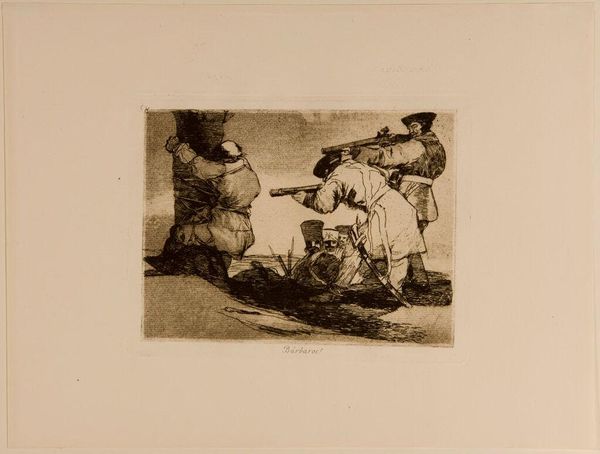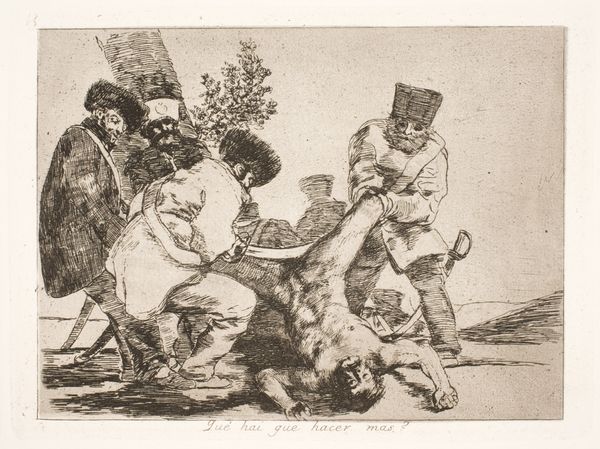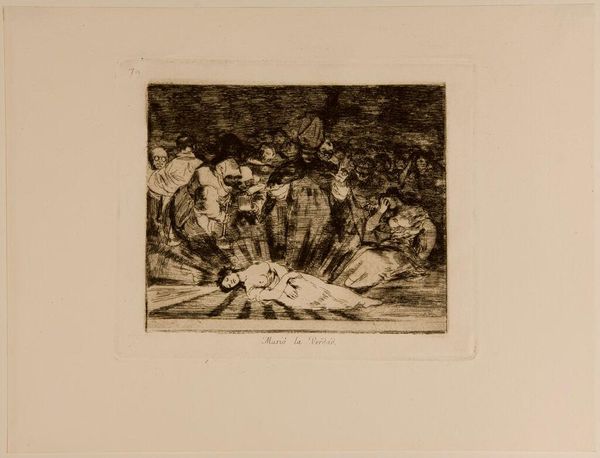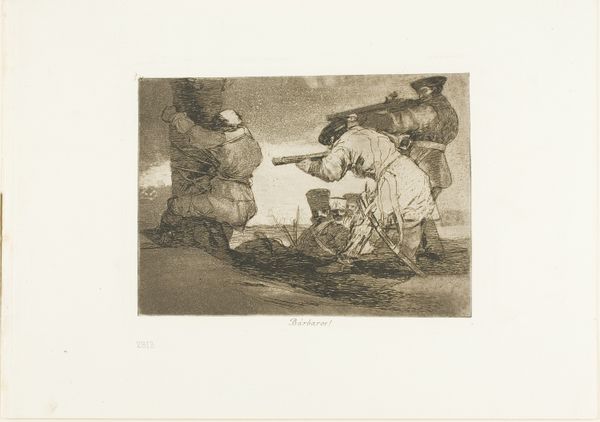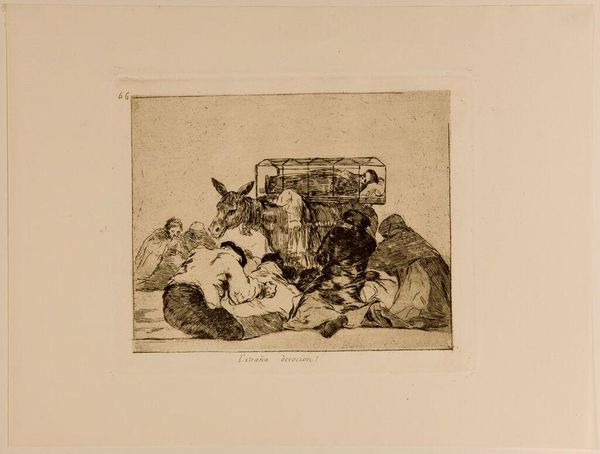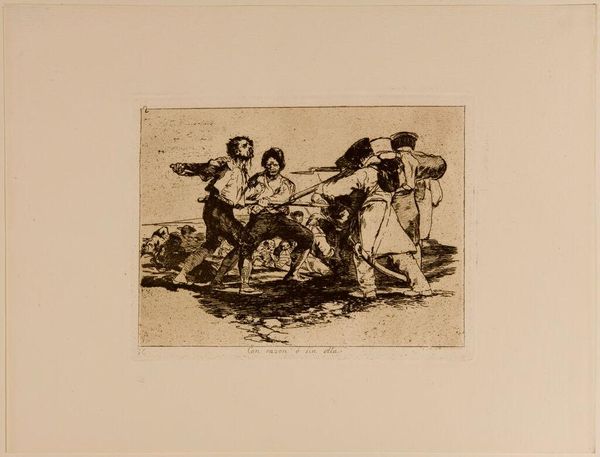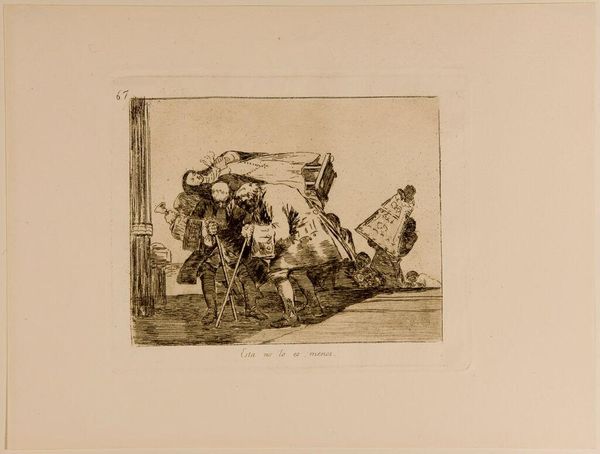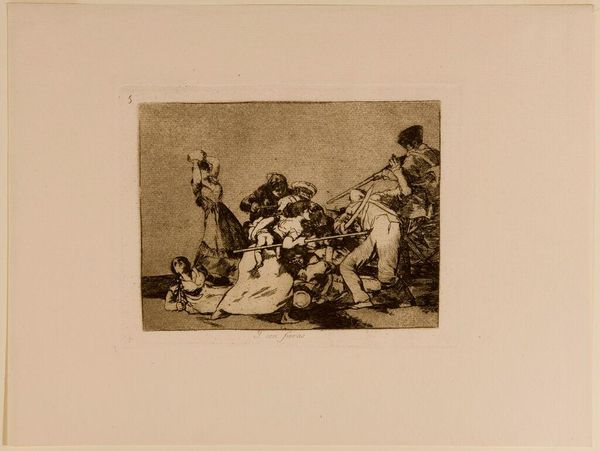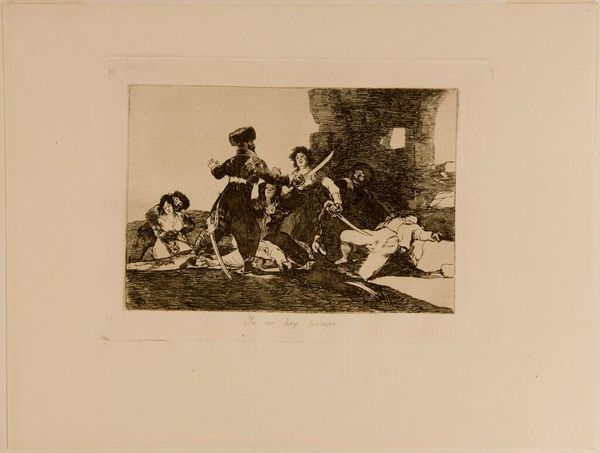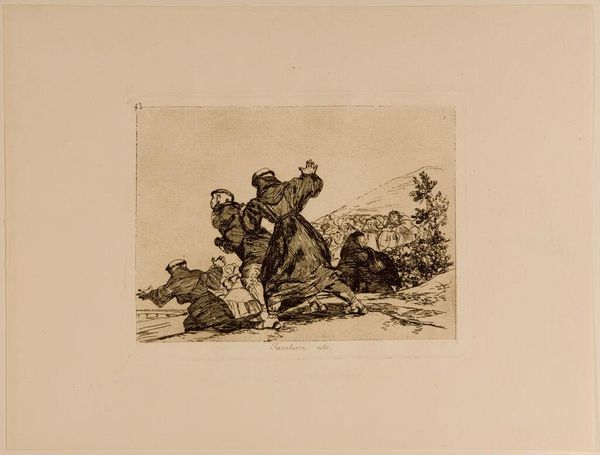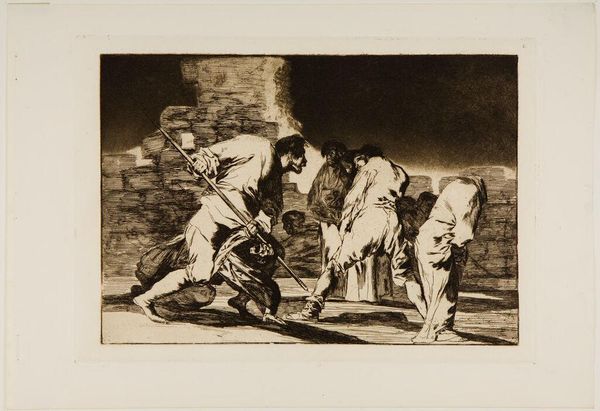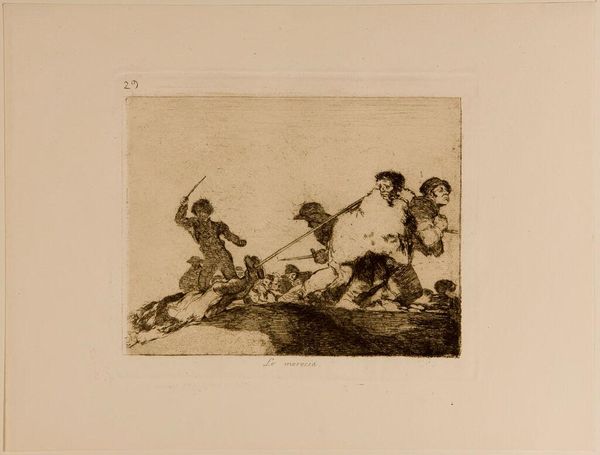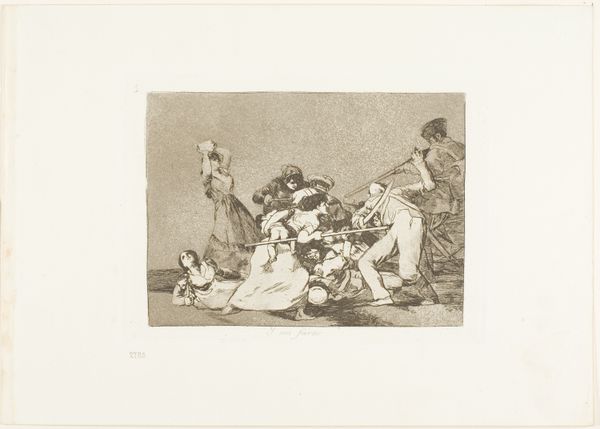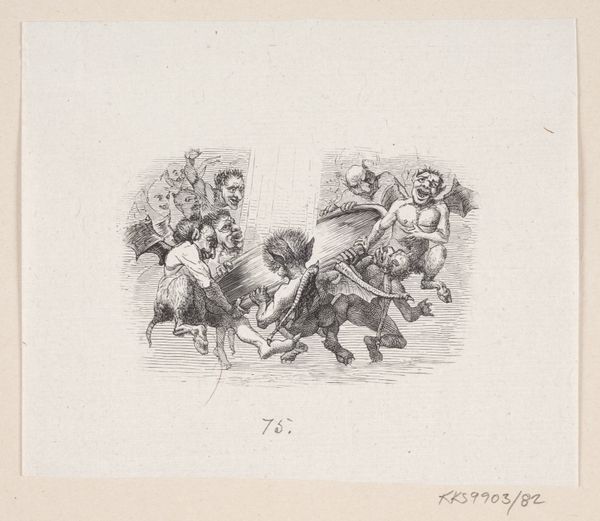
Copyright: CC0 1.0
Curator: Goya's "What More Can One Do?" leaves you breathless, doesn't it? It's a stark etching, a whisper of horror in sepia tones. Editor: It's more than whispers, I think. It's a condemnation of violence, situated in the context of the Peninsular War. Look at how the victim is positioned, almost Christ-like, against the faceless perpetrators. Curator: Faceless, yes, though that soldier on the right does seem to have paused, doesn't he? There's a flicker of something… human? Editor: I see his posture more as indicative of the banality of evil. Bureaucratic even. Violence as a chore, another day at the office. It’s a portrait of dehumanization, where the body becomes a site of political struggle. Curator: Perhaps you're right. The title itself, "What More Can One Do?" hangs like a taunt, doesn’t it? Implying infinite cruelty. Editor: Exactly. It's about the limits of resistance, the unbearable weight of oppression, but also a challenge to us: what will we do? Curator: A reminder that even the smallest act of witness can be a form of defiance. Editor: Indeed, art as a form of resistance, bearing witness to atrocities, and demanding justice. It’s a dark mirror, but a necessary one.
Comments
No comments
Be the first to comment and join the conversation on the ultimate creative platform.
